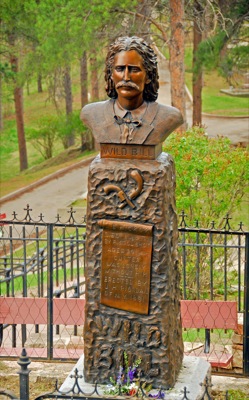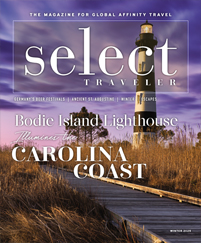
Courtesy South Dakota Dept. of Tourism
South Dakota provides a rich palette for Mother Nature’s distinctive and varied handiwork, from the ponderosa pine-covered Black Hills in the west to the fascinating formations carved by wind and rain from the prairie in the Badlands and the triple waterfalls of the Big Sioux River in the east that give Sioux Falls, the state’s largest city, its name.
South Dakota has also been the stage for a rich tapestry of historic characters, among them American Indian heroes, Old West legends and 20th-century visionaries.
Interstate 90, which traverses the bottom third of the state, ties these scenic and historic elements together for visiting bank groups.
A good starting point is Rapid City; from there, it’s an easy drive to many historic and natural wonders.
“We are fortunate to be located right in the center of all these great attractions,” said Michelle Thomson, tourism director for the Rapid City Convention and Visitors Bureau.
Before setting out to explore nearby iconic attractions such as Mount Rushmore, the Crazy Horse Memorial and Deadwood, groups can enjoy some of the attractions, shopping and dining in Rapid City, whose downtown is undergoing a major revitalization.
The new year-round landscaped Main Street Square, which opens in October, will be a central festival and event center with fountains, waterfalls, an amphitheater, a farmers market in the summer and an ice-skating rink in the winter.
“It is a great addition to downtown,” said Thomson. “It has started a huge development in downtown, with four restaurants and new stores.”
The square is across the street from the Prairie Edge Trading Company and Galleries, which is housed in a restored historic 19th-century building.
The store is packed with high-quality American Indian arts and crafts, most by local Northern Plains Indian artists and craftspeople.
Opening this month in Rapid City is the new Outdoor Campus. “It will provide education on outdoor experiences for both kids and adults,” said Thomson. “It is right in Rapid City, with a beautiful setting, trails, ponds and exhibits about the area.”
Groups can get a good historic overview of the region at the high-tech Journey Museum, which traces the history of the Black Hills from its geological formation through all the phases of human settlement.
Visitors can talk with volunteer geologists and paleontologists working on fossils, open drawers to feel the texture of buffalo fur, learn the story of pioneers at illuminated story walls and sit in front of a real buffalo-hide tepee as the holographic image of Lakota Nellie Two Bulls tells Indian stories.
“The Journey Museum has become a great place for group tours,” said Thomson. “Not only is it a Black Hills culture center, it gives the entire story before you go out and see it.”
Nature and man come together at the Mount Rushmore Gold and Diamond Factory Tour in Rapid City, where the region’s mineral wealth is transformed into beautiful pieces of jewelry by talented craftspeople.
On the tour, groups see gold, which has been melted by medium-frequency sound waves, poured into molds formed by burning away wax in what is known as the lost-wax casting method.
The most fascinating part of the tour is watching the artisans carve intricate designs into the grape leaves and grape clusters on the jewelry, one of the requirements for jewelry’s designation as Black Hills gold. The other requirements are that it is made in the Black Hills and is tricolor, usually green, red, gold or silver.
“This is the alchemy of what we do,” said a guide. “We turn wax into gold. It is quite a process.”
Man and mineral came together in a more violent and less artistic fashion when gold was discovered in the Black Hills in the mid-1870s. Deadwood’s colorful history stems from its early days as a rough and often lawless center for the many miners who flocked to the area in hopes of striking it rich.
Some hoped to make their fortune with cards instead of mining tools, and the murder of Wild Bill Hickok as he played poker in the No. 10 Saloon cemented Deadwood’s wild and wooly reputation.
Ironically, it is gambling that has led to a rebirth of Deadwood over the past two decades since voters approved limited-stakes gaming. Dozens of gambling establishments are located in restored historic buildings, a tax revenue has helped revitalize the downtown with new sewer lines, underground utilities, new brick sidewalks and period streetlights.
One of the newest casinos is the Deadwood Mountain Grand Hotel, Event Center and Casino, which opened this summer and is housed in a refurbished 1906 Homestake Mining Co. plant.
Deadwood, which is on the National Register of Historic Places in its entirety, has more than gambling, with interesting history museums such as the Adams Museum and Historic Adams House, panning for gold in an 1878 mine, tours of Chinese tunnels beneath the city and re-creations of the trial of Jack McCall, the man who shot Hickok.









